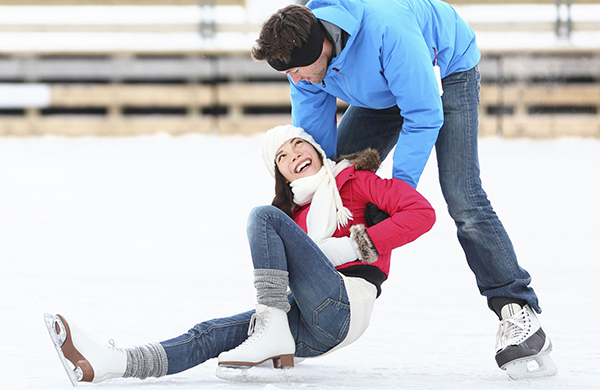Getting Started with Ice Skating Basics

If youŌĆÖre a tourist in UAE looking for new thrilling experiences, youŌĆÖd be amazed to find out they have an ice rink in Dubai. Your first steps on the ice can be heart tingling. Skating can be an awesome activity to cool down during the dry heat of the desert, and if you learn just a couple of basic techniques, your confidence and enjoyment will be through the ceiling. Unlike the strategic maneuvers involved in DubaiŌĆÖs escape rooms or team strategies in paintball, ice skating revolves around poise, synchronization, and grace. HereŌĆÖs a practical guide on tips and skills to have you gliding like a pro.
First Things First: Gear and Posture
Before physically stepping onto the rink, you should pay extra care to your gear. Start with the skates. Skates must not be too tight, but should absolutely fit securely with sufficient ankle support. If the laces are tight, you may have restricted movement thus, need to lace up gently, but not too loosely. The upper garment needs to be warm and comfortable, providing a minimum of two layers for ease of movement.┬Ā┬Ā
Once you step on the ice, maintaining proper posture is important for balance. Stand straight with your knees slightly bent, which is like a relaxed athletic position. Center your weight over your skates while keeping your head up and looking straight. Do not shift your torso too far, leaning forward or backward. For ease of forward stability, a slight lean from the ankles is appropriate.┬Ā┬Ā
Your First Steps: Marching and Gliding
To kick off the lesson, simply step onto the ice and try marching, which involves lifting one foot while keeping the other rooted. With time, you will get used to the fitted skates and slippery ice surface. If need be, grab hold of the rink barrier for balance. When you are ready, proceed to try some little gliding steps. Starting with one foot, push off gently and allow yourself to glide briefly on the other. Skaters bent at the knees should alternate feet and glide. Remember, the focus is on staying balanced and small precise movements, much like the focused observation needed in an escape room in Dubai.
The Snowplow Stop; Your First Brake┬Ā
Moving requires movement and in this case snowplow stop is a basic step, one which beginners take. Standing still, incline the toes of both the skates inward and advance slowly. While doing this, make a wedge which could be called an envelope or better still a vase shape. While doing this, push the heels of the skates to the sides and bend the knees further. Pusk will engender frictions which in turn helps most required for stopping. Do not try this at high speeds unless you have control of the situation and you have a predefined comfort zone fine-tuned.┬Ā
Forward Swizzles: Building Balance and Momentum
To establish and enhance your coordination, forward swizzles are best suited and therefore recommended movement. Toes should be angled outside and heels must touch during the formation of a mini ŌĆ£vŌĆØ. Now push the insides out to a much wider v shape and be close to them while slightly bending knees. Come back to wedges position and ensure no edges are allowed during retreat to give to. The aim is to use the blades to control and bush retire which overtime will build balance and control over the edges.
Basic Forward Movement: The Push and Glide
When you have mastered marching and swizzles, you can begin to move forward with more energy. Start from a neutral position which is a balanced stance and slightly bent knees. With one foot, push off at a slightly outward angle, transferring your weight onto the other gliding foot. Focus on long smooth glides after each push. To maintain proper balance, extend your arms sideways and keep them slightly behind your hips.┬Ā
Falling and Getting Up Safely┬Ā
Any new activity that tests your agility such as ice skating, can pose a risk of falling. This is not a cause for concern, falling is a healthy sign of experimenting with your physical limits. Managing to rise from a fall properly is equally as valuable. Knees should be bent low enough for the feet to come beneath the hips in order to lower the center of gravity. Lower onto your hands and knees intending to land face down, not on your back. To get up, shuffle into a hands and knees position. Place one foot firmly on the ice between your hands and then push up slowly while using the other foot for support. If you need to, as you get your balance, hold onto the barrier.
Practice Makes Perfect
Take your time and give yourself the necessary kudos for practice. Finding oneŌĆÖs footing while ice skating is like negotiating difficult levels in an escape room or strategizing in paintball Dubai; it takes a considerable amount of time and practice. If things donŌĆÖt seem to be working out the first time round, donŌĆÖt quit. Allocate some time to an ice rink working on the basic skills. Attending a beginnerŌĆÖs class may also be beneficial. With some time, you will be floating on ice and completely loving the experience. So donŌĆÖt give up too soon.




